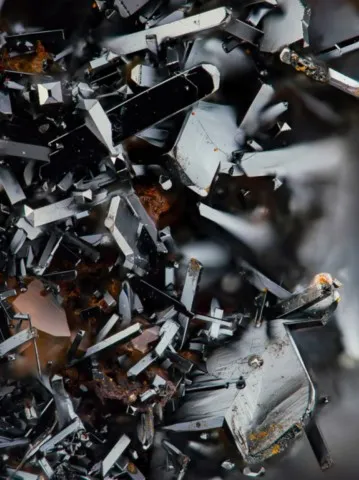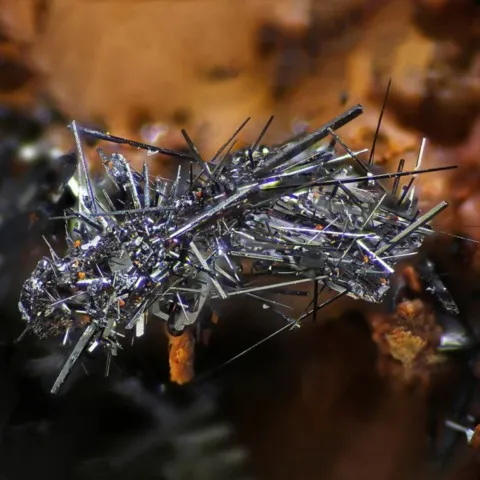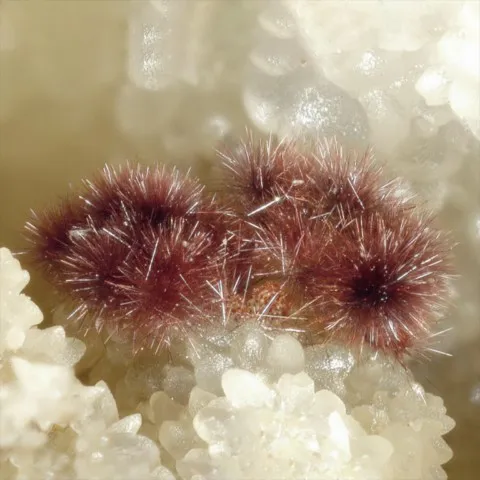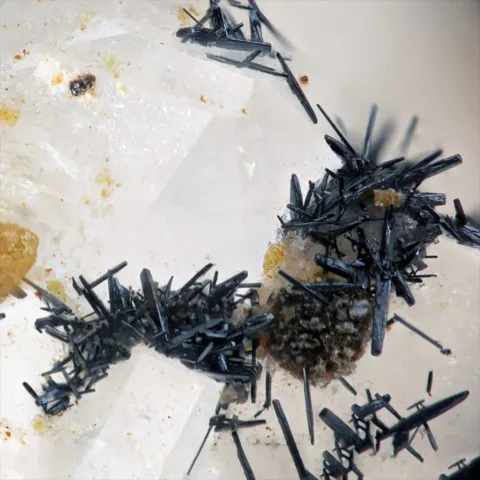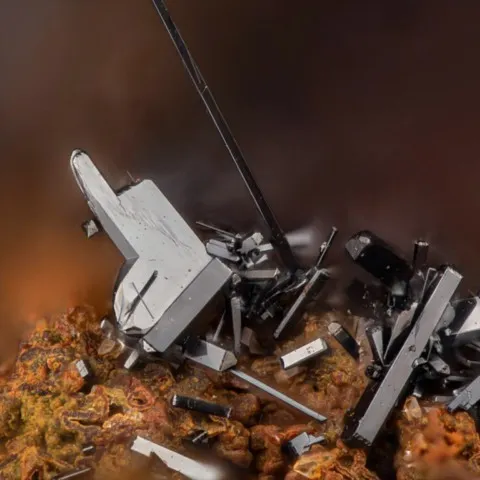PLATTNERITE
Class : Oxides and hydroxides
Subclass : Oxides
Crystal system : Tetragonal
Chemistry : PbO2
Rarity : Uncommon
Plattnerite is an uncommon oxide from the oxidation zones of lead deposits. Its formation conditions seem even more drastic than those of massicot or minium : they require a strong desert climate, a high pH, and a strong oxidation-reduction potential. It was named in honor of Karl Friedrich Plattner; Professor of Metallurgy at the University of Freiberg (Germany). The crystals are small, elongated shiny black prisms, sometimes twinned, measuring up to 5 mm. But this mineral more readily constitutes fibrous nodular or botryoidal masses, with a zoned concentric texture, black to dark brown in color.
Main photo : Plattnerite from Preguiça Mine, Sobral da Adiça, Moura, Beja, Portugal © Pedro Alves
Plattnerite in the World
Twinning
Contact and penetration twins are known on {011}.
Fakes and treatments
No fakes listed for this mineral species.
Hardness : 5.5
Density : 9.56
Fracture : Fibrous to sub-conchoidal
Streak : Dark brown
TP : Translucent to opaque
RI : 2.250 to 2.350
Birefringence : 0.100
Optical character : Uniaxial -
Pleochroism : Low
Fluorescence : None
Solubility : Hydrochloric acid
Magnetism : NoneRadioactivity : None

